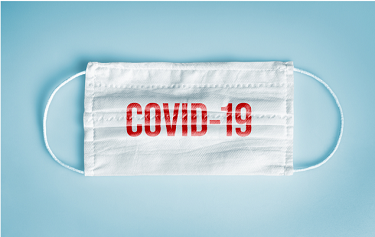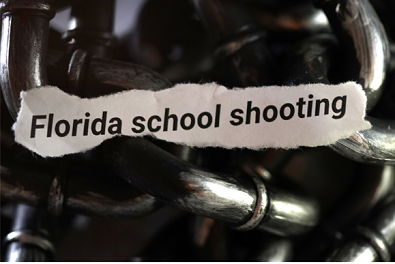COVID-19 A Plague of Mixed Messages

Not since the Spanish Flu, has the world experienced such an extreme health crisis as the Covid-19 pandemic.
Large-scale crises over the past 100 years have shaken the world. We’ve faced wars, terrorist attacks, stock market crashes, recessions, revolutions, nuclear and natural disasters. Now we face the 2020 COVID-19 pandemic and it’s horrendous health and financial consequences.
Mixed messages have confused the public
Online traffic seeking Covid-19 updates has surged as global leaders use the media to reach their target audiences.
Unfortunately, mixed messages have caused uncertainty. People receiving a flood of confusing and conflicting information have acted based on their own interpretations. This meant some were following guidelines, others weren’t.
The last thing you need in a crisis is mixed messages. During the Covid-19 pandemic, mixed message examples are endless.
President Trump contradicted health advice
As worldwide debate persisted about the value of wearing face masks, the US government updated its guidelines.
The government recommended people should be “wearing cloth face coverings in public settings”. But President Donald Trump contradicted that advice, announcing it was voluntary and saying, “You do not have to do it…I don’t think I’m going to be doing it”.
So the message is…?
School messages confused parents
In some cases, mixed messaging has been understandable. Australian schools are a good example.
Schools across the country have delivered various messages because of their different situations and jurisdictions.
Some schools closed while others remained open.
The ABC’s Australian Story ‘One day at a time’, included these three back to back comments demonstrating mixed school messages:
Prime Minister Scott Morrison,
“Children should go to school tomorrow”
NSW Premier Gladys Berejiklian,
“We will be encouraging parents to keep their children at home”
A parent,
“Should I listen to the principal here, or the Premier? The Prime Minister? Who?
Too many mixed messages confused parents.
Maybe the better message from spokespeople outside the schools would be, “Every school is different. All schools are in contact with their Education Departments. Contact your school and follow their recommendations.”
Social distancing messages were open to interpretation
The messages around ‘social distancing’ were initially unclear and not well managed, resulting in people making their own assumptions and acting accordingly.
When it was announced that no more than 500 people could gather in outdoor spaces and individuals must keep 1.5 metres apart, crowds still turned up to Sydney’s famous Bondi Beach. Many beach goers carried on as normal and it became a global news story. To stop Covid-19 spreading, Bondi Beach closed.
Rules for other Australian beaches remained confusing.
Sydney Morning Herald Writer, Kasey Edwards, went for a stroll on a Melbourne beach after checking local guidelines. She was shocked when police approached her during her walk. They told her the beach was closed and she must leave.
Kasey said, “The messages from the different levels of government – even from within the same level of government — are so inconsistent and mind-bogglingly illogical, that even when you try to do the right thing you can’t. I will gladly do the right thing. I just need to know what it is.” She also stated, “if an adult can’t easily follow the hodgepodge, reactionary, contradictory and loop-hole-ridden advice, then how are we supposed to give clear rules to our kids?”
Self isolation guidelines confused doctors
Medical professionals arrived in Australia from a conference and failed to follow self-isolation guidelines.
The doctors later said that there was confusion at the airport. They believed they were following police instructions to go to their homes and self-isolate.
Economic stimulus information confused small business
There was misunderstanding about the Federal Government’s stimulus packages, including what is available and who can receive it.
The $130 billion Jobkeeper scheme is a good example.
The Prime Minister’s media release stated, “Eligible employers will be those with annual turnover of less than $1 billion who self-assess that have a reduction in revenue of 30 per cent or more, since 1 March 2020 over a minimum one-month period.”
What is ‘self-assess’? How does it work?
Which 1-month period?
The Jobkeeper criteria baffled small business, forcing the Government to clarify.
So, who is handling the Covid-19 crisis messaging well?
ABC health reporter Dr Normal Swan has been terrific when delivering clear information about this fast-moving story.
Victoria’s Chief Health Officer, Dr Brett Sutton’s concise understandable message delivery during the early stages of the crisis is another excellent example.
Australian immunologist, Peter Doherty, should get an award for explaining complex medical language in simple terms. He nails it in this article as he’s been doing since day one of this crisis.
Clarity and guidance are needed
The public and businesses around the world are relying on their governments and leaders for guidance during the Covid-19 pandemic.
The confusion media messages have caused during this crisis is an important reminder for communications professionals and leaders, to deliver clear messages from the outset.
So, what can we all learn about crisis messaging from Covid-19?
Prepare media messages before a crisis hits. The more prepared you are for a possible crisis, the better.
Create clear, concise media messages that you can easily adjust prior to release.
Where possible, try to remove the need for later clarification, even if it means delaying the initial release.
In a crisis like Covid-19 where everyone needs to understand instructions, ensure media messages are clear, concise and jargon free.
Test media messages on an audience outside your area of expertise. Do they understand? If not, adjust the messages.
Don’t risk losing your audience’s trust with mixed messages.
Remember that unclear media messages could hinder or destroy your desired outcome and damage your credibility.
Very important! Try to stick to one media spokesperson. If there is more than one, everyone needs to be delivering the same messages.
Information Only
Any information presented on our website is general. It is not a substitute for professional advice.
Further Assistance
To get the most from your media opportunities and avoid the danger zones, contact Corporate Media Services for more information about our training programs and media consultancy.
Due to Covid-19 restrictions, all Corporate Media Services training courses are currently conducted online.
For information and bookings please call 1300 737 913 or Director Doug Weller 0412 298905.

 By
By